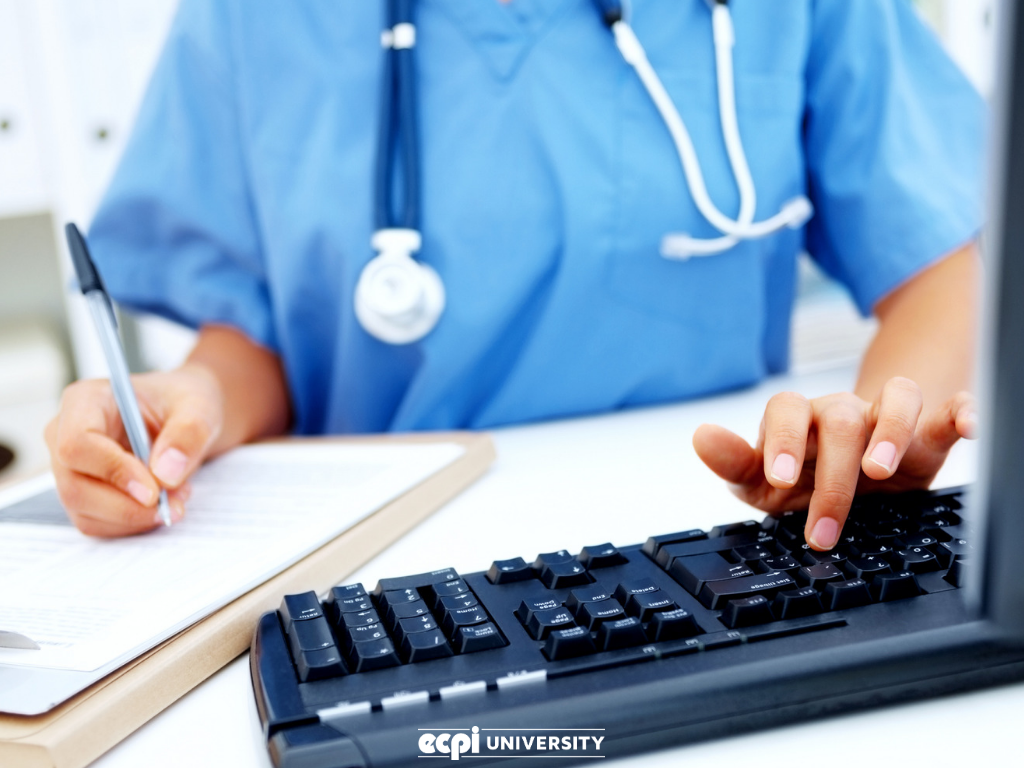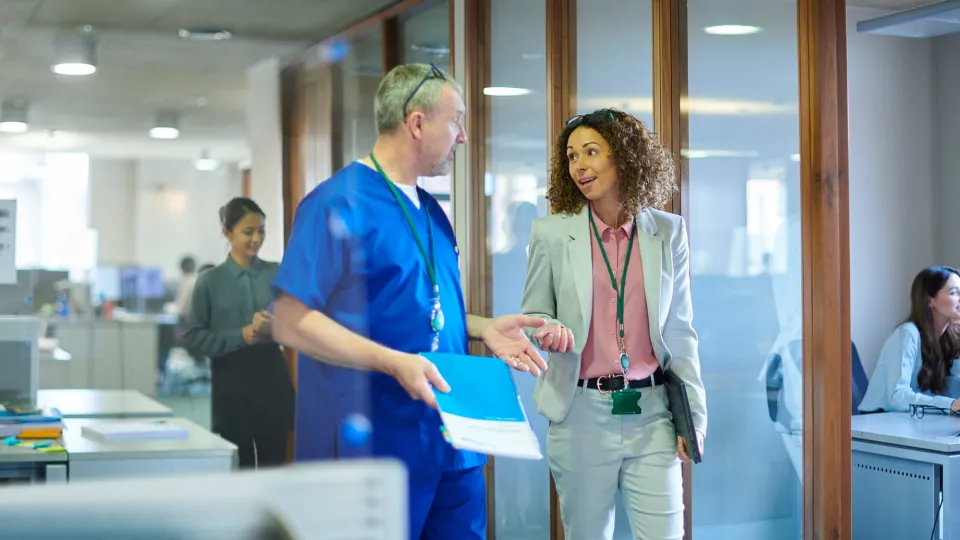Leading Skills Required to Excel in Medical Administration Responsibility Today
Leading Skills Required to Excel in Medical Administration Responsibility Today
Blog Article
Finest Practices in Medical Administration for Improving Effectiveness and Reducing Expenses
In the ever-evolving landscape of healthcare, the quest of ideal techniques in medical administration is vital for enhancing performance and curbing costs. By integrating advanced technologies such as electronic health and wellness records and telemedicine, health care providers can streamline operations and enhance person care. Technology alone is not a panacea; optimizing source appropriation and promoting collaborative communication amongst care groups are just as important. As organizations make every effort to balance quality and expense, what techniques should be focused on to achieve these double objectives? The responses to these inquiries hold the trick to a more sustainable healthcare system.
Leveraging Advanced Innovation
In today's rapidly advancing healthcare landscape, leveraging innovative innovation is no longer optional but vital for effective medical administration. The combination of digital services right into health care systems has actually transformed the means facilities operate, improving procedures and enhancing person care. Electronic Wellness Records (EHRs) are critical, providing thorough client information that can be accessed instantly by authorized personnel, hence decreasing redundancy and minimizing mistakes. By streamlining client information, EHRs eliminate the need for difficult documentation and promote smooth interaction amongst health care companies.
Telemedicine is an additional technical advancement that has changed individual communication. It offers ease for both clients and health care experts by enabling remote assessments, which can minimize the demand for in-person check outs and maximize visit scheduling. Additionally, telehealth platforms can expand medical care access to country or underserved locations, linking gaps in treatment shipment.
In addition, making use of Expert system (AI) and artificial intelligence is becoming significantly prevalent in predictive analytics, permitting very early detection of prospective health and wellness problems and more enlightened decision-making. These innovations, when integrated effectively, can improve diagnostic accuracy and personalize patient treatment plans, eventually bring about boosted health care outcomes and functional performance.
Optimizing Resource Allocation
Effective source allowance is essential for maximizing the efficiency of clinical management. By tactically taking care of sources such as employees, equipment, and finances, health care facilities can significantly enhance their functional efficiency, boost person results, and reduce unnecessary expenses. The initial step in optimizing resource appropriation involves carrying out a detailed analysis of current possessions and determining locations where sources may be underutilized or overextended. This analysis should be data-driven, using metrics and analytics to notify decision-making processes.
Prioritizing resource allowance based upon patient demands and solution needs is necessary. This includes aligning resources with high-demand areas, such as emergency treatment or specialized treatments, to ensure prompt and reliable patient care. Carrying out flexible staffing models can likewise optimize labor resources by adjusting personnel allocation in action to rising and fall client volumes. In addition, welcoming telemedicine and various other technical solutions can reduce physical resource restrictions by supplying different methods for patient-provider interactions.
Economic sources ought to be diligently checked and designated with critical foresight to support both short-term functional demands and lasting institutional objectives. This consists of investing in training programs that boost team proficiencies and adopting energy-efficient practices that lower functional expenses (medical administration). Inevitably, an enhanced resource allowance approach fosters a sustainable health care setting that is receptive, efficient, and economically sensible
Streamlining Process Processes
When healthcare centers goal to enhance operational efficiency, streamlining process procedures becomes a pivotal focus. Reliable workflows lessen redundancy, get rid of unneeded actions, and enhance sychronisation amongst medical care specialists. This method not only accelerates solution delivery however also improves the high quality of individual care.

Following, innovation assimilation plays a significant role in enhancing process. Applying electronic health records (EHRs) and digital medical professional order access (CPOE) systems minimizes documents, lessens human mistake, and guarantees information comes to all appropriate personnel. Furthermore, leveraging telemedicine platforms can enhance client assessments and follow-ups, reducing the stress on physical facilities.

Inevitably, structured workflows lead to cost decreases and improved client fulfillment, cultivating an extra lasting medical care atmosphere.
Enhancing Information Monitoring
Structure upon structured workflows, enhancing data management comes to be an essential component ahead of time health care administration. Reliable information monitoring systems are critical for preserving exact patient documents, enhancing decision-making, and making sure conformity with regulative criteria. By executing durable data monitoring solutions, medical care facilities can improve the high quality of person treatment while all at once decreasing functional expenses.
One trick aspect of enhancing data administration is the integration of innovative digital health record (EHR) systems. These systems assist in the seamless exchange of patient info throughout different departments, lowering duplication of tests and decreasing mistakes. A properly designed EHR system supports information analytics, making it possible for doctor to determine trends and make informed decisions pertaining to patient care.
In addition, guarding person data is paramount. Taking on detailed cybersecurity actions, consisting of encryption and normal audits, makes certain the integrity and confidentiality of sensitive details. This not just safeguards people yet likewise maintains the organization's reputation.
Buying personnel training is an additional critical aspect. Informing medical care professionals on information monitoring techniques enhances their capacity to successfully use technology, resulting in enhanced individual end results. find this To conclude, boosting data management with advanced innovation and visit this website thorough training is necessary for accomplishing efficiency and price reduction in clinical management.
Fostering Collaborative Communication
A vital part beforehand clinical management her explanation is promoting collaborative interaction among healthcare experts. Reliable communication is vital for making sure seamless patient treatment, optimizing treatment end results, and reducing errors. By motivating open discussion and control throughout multidisciplinary teams, healthcare organizations can boost their operational performance and reduce unneeded costs.
Central to this method is the combination of interaction modern technologies such as electronic health and wellness records (EHRs) and protected messaging systems, which facilitate the fast exchange of important patient information. These devices enable health care service providers to accessibility and share data in genuine time, making sure that all staff member are educated and straightened in their decision-making procedures. Moreover, normal team conferences and interdisciplinary rounds can better promote a society of collaboration and accountability.
Educating programs concentrated on improving interaction skills are likewise crucial. Eventually, promoting collaborative interaction leads to boosted health care distribution and price savings.

Conclusion
Integrating sophisticated technology, such as digital health documents and telemedicine, alongside optimized resource allocation and streamlined workflow processes, is important for boosting efficiency in clinical administration. Efficient data monitoring and promoting collaborative interaction among medical care teams are critical for minimizing redundancies and improving treatment quality. By focusing on preventive care and taking part in quality renovation efforts, medical care companies can achieve substantial price financial savings and enhanced individual results, thereby making sure sustainable medical care distribution in a significantly complicated atmosphere.
Report this page